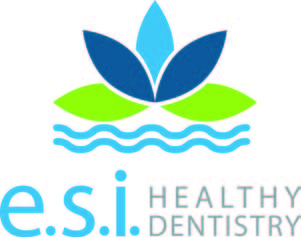For those of us who have insurance, this is a great thing. When it comes to dental insurance, it is very different from medical insurance. Dental insurance has a lot of restrictions and rigid rules. They will pay a percentage for certain treatments and a different percentage for others. Copays range from as little as $5 to over $1000. There is also an annual maximum which is usually around $1500. The fee schedule has not really kept up with the economy and this structure has not been updated since the 1960’s. You can imagine $1500 used to get you a whole lot more dentistry than it does today.
What is quite interesting is that insurance will deny certain necessary services yet mandate certain unnecessary treatment. For example, they may deny a crown because there is no decay on an x-ray but the tooth can have a fracture where 50% is missing but is not seen in an xray. Many times if we take an actual photograph and write a narrative, this can be circumvented. Another example is they require x-rays every time you place a crown, which is not always necessary. The fact of the matter is insurance is not a health care provider, never meets the patient or cares about them. Your health care provider genuinely cares about you and makes customized recommendations that are right for you. Sometimes these recommendations may not be “covered” or “approved” by insurance.
Let’s look at remineralization, for example. Sometimes patients have small areas of demineralization — spots between the teeth with less mineral. Think of these as the beginning of cavities. These small cavities can be remineralized with a calcium sulfate paste. This paste however is not covered by insurance. What is covered by insurance is fillings. If you had 10 areas of demineralization would you pay $50 out of pocket to reverse them biologically or would you use your insurance “coverage” and get 10 mercury fillings and pay multiple copays?Another example is periodontal disease. Sometimes insurance does not cover non-surgical periodontal treatment like regeneration, platelet rich fibrin or laser therapy. They may downgrade the treatment to extractions (tooth removal) instead of maintaining the teeth and treating them.
No insurance? No problem. Did you know you can pay your dental professional for the services that you need? People ask me “what insurance should I get?” My response is “it depends!” If it’s just you and you only need two exams, cleanings and some necessary radiographs, it would cost you less to just pay out of pocket for those services. This way you only pay for what you need. If your monthly insurance premium is $100 per month, not only will it cost you $1200 per year, but you will also have to cover additional copays and deductibles. If you pay out of pocket for those basic services it will cost you between $300 and 400.
When someone else pays for your health care it isn’t exactly health “care.” Insurance companies do not have your best interest in mind. They deny minimally invasive, advanced, biological treatments and often downgrade to other, less expensive, aggressive treatment.
Once you have established a rapport with your dental health care provider and you trust them, follow their lead. They are the ones that care about you and want you to be healthy. WE got you covered!
 Jimmy Kilimitzoglou, DDS, FACD, FPFA, DABOI, MAGD, FAAID, FICOI ESI Healthy Dentistry
Jimmy Kilimitzoglou, DDS, FACD, FPFA, DABOI, MAGD, FAAID, FICOI ESI Healthy Dentistry
42 Terry Road, Smithtown, NY 11787
Tel (631) 979 7991 / Fax (631) 979 7992
dental@esihealthydentistry.com
www.esihealthydentistry.com
















